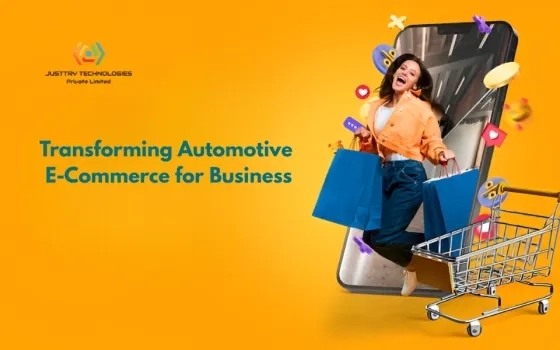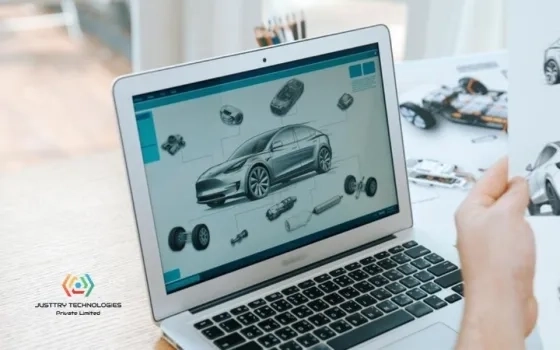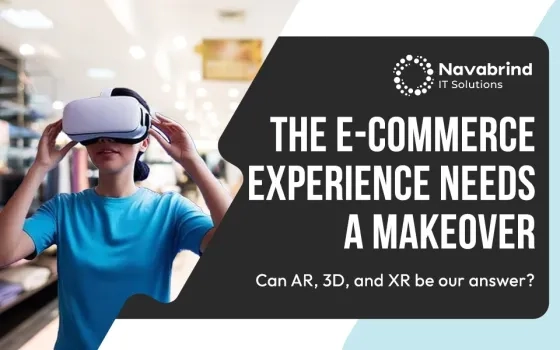In today's competitive online landscape, simply having a website isn't enough. To truly thrive, businesses need an e-commerce platform that is not only visually appealing but also designed to convert visitors into customers. That's where an experienced E-commerce Website Development Services like ours comes in. We specialize in crafting intuitive and user-friendly online stores that cater to your specific needs and target audience. Our team of experts understands the intricate details of e-commerce success, from mobile responsiveness and SEO optimization to product presentation and secure checkout processes. We work closely with you to develop a website that not only reflects your brand identity but also drives sales and maximizes your return on investment.
Global Website Builders Market to Reach $3.8 Billion by 2030
The global market for Website Builders estimated at US$2 Billion in the year 2022, is projected to reach a revised size of US$3.8 Billion by 2030, growing at a CAGR of 8.2% over the analysis period 2022-2030.
The Website Builders market in the U.S. is estimated at US$594.1 Million in the year 2022. China, the world's second largest economy, is forecast to reach a projected market size of US$588.1 Million by the year 2030 trailing a CAGR of 9.6% over the analysis period 2022 to 2030.
However, many businesses attempt to navigate the complexities of e-commerce development on their own, often falling into common pitfalls that can hinder their online success. By partnering with a reputable E-commerce Website Development Company, you can avoid these costly mistakes and ensure your website is built from the ground up with conversion and user experience in mind. We leverage our industry expertise and proven strategies to create a platform that not only looks great but also functions flawlessly, ensuring a smooth and enjoyable shopping experience for your customers. To help you avoid these mistakes and achieve debt-free growth, we'll explore 7 crucial aspects and effective strategies:
- Ignoring mobile users
We live in a time when people reach for their smartphones before their toothbrushes in the morning. Statistics show that over half of online shopping is now done on mobile devices. Despite this fact, many e-commerce websites are not fully optimized for mobile browsing, leading to a frustrating user experience and, consequently, lost sales. Choose a mobile-friendly design from the offset, test your site's mobile responsiveness regularly, and make necessary changes to ensure a smooth shopping experience for your mobile users.
- Overlooking SEO Basics
When it comes to driving organic traffic to your website, SEO (search engine optimization) is your best friend. It helps your site rank higher on search engine result pages (SERPs), making it visible to potential customers. Common mistakes like using ineffective keywords, ignoring meta descriptions, and failing to optimize images can severely impact your SEO and hinder your site from reaching its full potential. Make use of keyword research tools, craft compelling meta descriptions and alt tags for images, and consider SEO from the early stages of website development itself.
- Complexity in Navigation
Picture this: you walk into a grocery store with poorly labeled aisles and a confusing layout. It would be a nightmare, wouldn't it? Similarly, an e-commerce website with complex navigation can deter customers and lower your conversion rates. Not labeling categories properly, having too many menu items, or creating an overly intricate site structure can leave a customer puzzled and impatient. To enhance your user experience, keep your navigation simple, intuitive, and straightforward.
- Inadequate product descriptions and images
Have you ever looked at a product online and wished there was just a little more information? Poorly crafted product descriptions or low-quality images can often leave customers in the dark and lead to abandoned carts. It's essential to have clear and concise descriptions that highlight the key features of your product. Equally important are high-quality, zoomable images that show the product from multiple angles. Together, these can paint a clearer picture for your customers and guide them toward a purchase.
- Underestimating the Importance of Website Speed
Online shoppers are a busy and impatient lot. If a website takes too long to load, they will likely abandon it and move on to your competitors' quicker sites. High-resolution images, auto-play videos, or unnecessary widgets often slow down a website. Keep an eye on your site's load time, optimize your images and code, and keep your website lean and mean to fight off high bounce rates and cart abandonments.
- Neglecting security measures
With frequent headlines about data breaches and online scams, internet users are more cautious than ever. If your e-commerce website doesn't have robust security measures in place, it can lead to a loss of customer trust and business reputation. Ensure to have SSL certificates and secure payment options, and regularly update your site's security plugins to safeguard your customers’ data and retain their trust.
- Not considering customer feedback
We've all seen websites with cluttered designs, unreadable fonts, or frustrating checkouts. These are often the result of not considering the user's perspective. Feedback from your customers is invaluable in making your website functional, attractive, and intuitive. Incorporate user surveys, feedback forms, and user-testing tools into your website development strategy to ensure continual improvement.
By partnering with an experienced Ecommerce Website Development Company, you can avoid these pitfalls and create a website that drives sales, fosters customer loyalty, and sets your business on the path to debt-free growth.
Conclusion
Successfully creating an e-commerce website requires thoughtful attention to many facets, from mobile optimization to strong security measures. Evading these common pitfalls can set your website apart from the competition, leading to higher user satisfaction and improved conversion rates.
Frequently Asked Questions (FAQs)
Do I need a mobile-friendly website for my e-commerce business?
Answer: Absolutely! In 2024, over half of all online shopping happens on mobile devices. Ignoring mobile optimization means losing potential customers and sales. Choose a responsive design that adapts flawlessly to any screen size.
How important are high-quality product descriptions and images?
Answer: Extremely important! Compelling descriptions highlighting key features and benefits entice customers. Include high-resolution, zoomable images showcasing your products from different angles to build trust and encourage purchases.
How can I ensure my website loads quickly for optimal user experience?
Answer: Website speed is crucial! Optimize images, minimize unnecessary scripts and plugins, and choose a reliable hosting provider to prevent slow loading times that frustrate users and hurt conversions.
How can I gather and leverage customer feedback to improve my website?
Answer: Utilize surveys, feedback forms, and user testing tools to understand user experience and preferences. Actively listen to feedback and implement changes to address pain points and enhance your website's usability.
Should I build my own e-commerce website or hire a professional developer?
Answer: If you have technical expertise and time, building your own website might be an option. However, for most businesses, partnering with an experienced e-commerce development company can save time, ensure quality, and provide valuable expertise to navigate the complexities of building a successful online store.
What are the current trends in e-commerce website development?
Answer: Trends include voice search optimization, personalization, headless architecture, progressive web apps (PWAs), and augmented reality (AR) integration for product visualization. Staying informed about these trends can help you future-proof your e-commerce website and stay ahead of the competition.






























